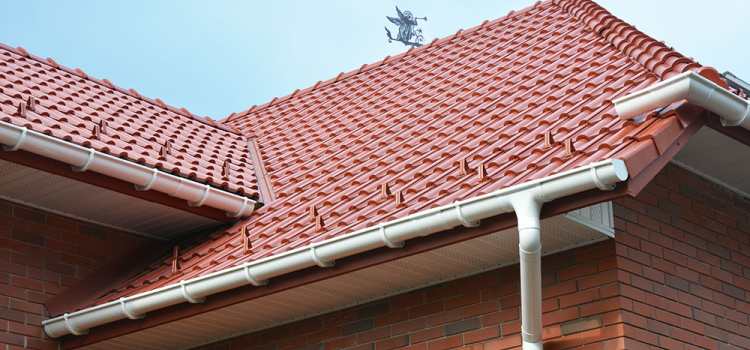After reading the title, you might think it is common sense for Arizona homeowners to install gutters on their home, and who wouldn’t, considering the added value gutters give to the house. For some people, they don’t think of having gutters in their homes as a necessity for one reason or the other. This article is for highlighting some points that define the need to have gutters in every Arizona home. Some of the points that highlight why gutters are needed in homes are discussed here:
• Red Clay
If the water does get accumulated around the foundation of your home or the ground, red clay can start to build up, which can make for a mess. When you use gutters and an adequately built pipeline, the water is directed away from the foundation of your home, keeping it safe from any red clay buildup and unnecessary damage to the surrounding area.
• Sloped Properties Accumulate Puddles
If your home was built at the bottom of a slope or has a sloping hill to the side of it, the excess water accumulates around the house, creating flood-like conditions that can cause damage to the structure and plant life. To avoid this situation, you can install rain gutters to divert the roof water away from the property. Rainwater can be redirected into the street, a sewer system, or drainage pipes. Rainwater can also be re-purposed for watering plants and other landscaping.
• Protect Your Siding
Roofs that don’t overhang and do not have gutters allow water to contact the siding of the home directly. In Arizona, many homes have stuccos siding, while you might find some home in Northern Arizona with wood siding, it isn’t as common. Heavy monsoon rains can damage either siding type if the water isn’t redirected and funneled off the roof and into a strategic place. To avoid your siding from being damaged, a gutter can be a lifesaver as it does not allow the water to drain off the roof against the inner lining of the home.
• Basement Flooding
Basements aren’t very common in Arizona because of the hard rocky ground. Digging down doesn’t make as much sense as building up. However, there are many homes in Arizona with basements. These basements can become heavily flooded during monsoon season if gutter systems are not installed. Water can accumulate rapidly during a monsoon, and ground-level windows and doors, if not appropriately sealed, can become flooded in an instant. The only effective way to prevent this from happening is to install robust and long-lasting rain gutters.
Things to Consider While Installing Gutters
Gutters only have one purpose, and that is to divert the water away from the foundation and siding of your house, thus protecting it from any adverse effect that might result from accumulated water getting in contact with the house. Gutters are an absolute must in humid climates, snowy climates, and rainy climates. Where wet weather conditions are common, homes need gutters. While Arizona isn’t known for year-round rains, the monsoon seasons are severe enough to justify the investment, so that you can protect your most significant investment, your home.
Keeping your gutters clear of debris and repaired when damaged will help them to prevent damage to your home. Leaf guard screens and other protective covers can prevent debris build-up and long term damage caused by foliage. Also, make sure you are installing gutters that are made of a material that is tolerant to harsh conditions and come with a guarantee. Arizona rains and winds are heavy, proper installation is required for adequate drainage.





